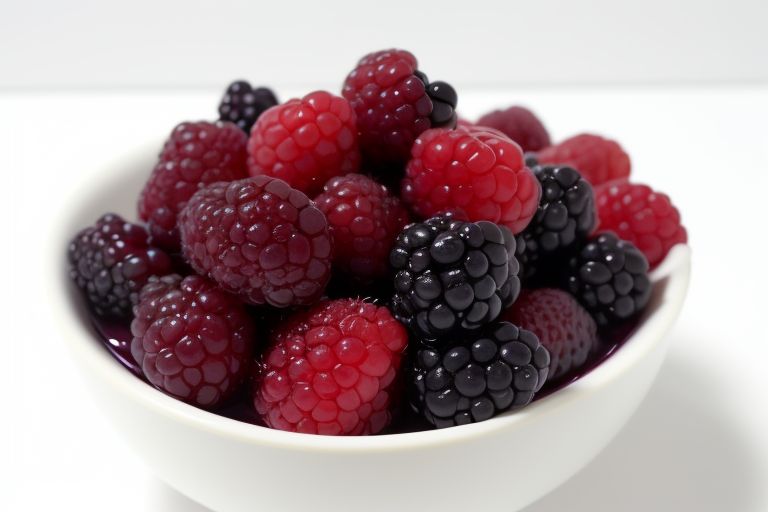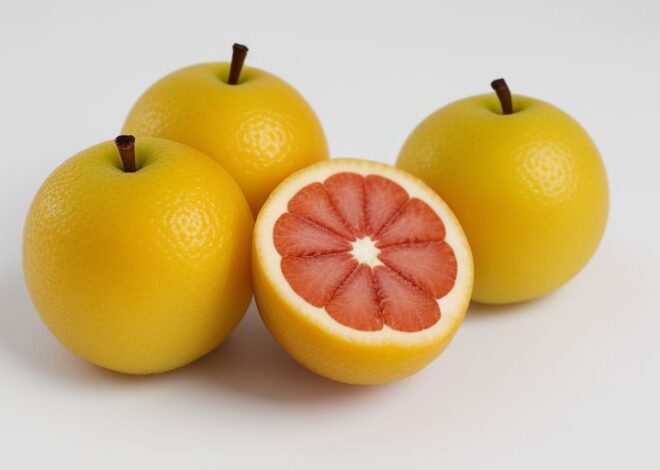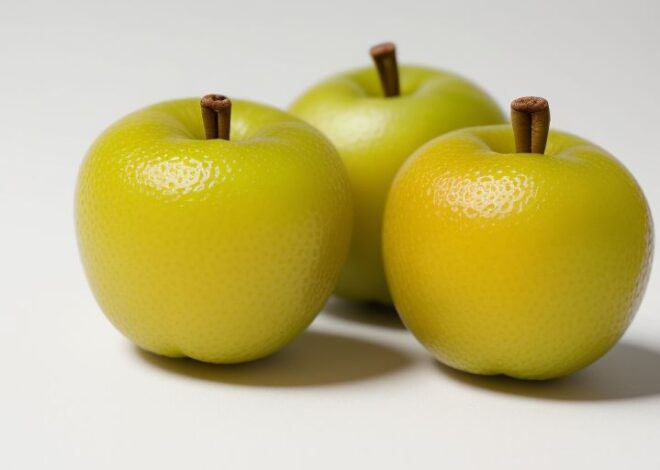
Marionberry
Introduction
Marionberry, a type of blackberry, is a hybrid fruit that has gained immense popularity worldwide due to its unique taste, texture, and nutritional benefits. It is a cross between the ‘Chehalem’ and ‘Olallie’ blackberry varieties, developed by George F. Waldo in 1945 at the Oregon State University’s Agricultural Experiment Station. Marionberry is named after Marion County in Oregon, where it was first cultivated.
Etymology
The name “Marionberry” is derived from Marion County, Oregon, where the fruit was first developed. The county was named after Francis Marion, a Continental Army general from South Carolina.
Description
Marionberry is a trailing blackberry, characterized by its dark purple color, sweet-tart taste, and soft, fragile texture. The fruit is larger than other blackberry varieties, with an average length of 1 inch (2.5 cm) and width of 0.75 inches (1.9 cm). Marionberries have a distinctive conical shape, with a plump, juicy body and a small, seedless stem end.
Taxonomy and Cultivars
Marionberry is a hybrid of the blackberry species Rubus argutus and Rubus ursinus. It belongs to the rose family (Rosaceae) and is classified as Rubus x marionensis. Some popular cultivars of Marionberry include:
| Cultivar | Description |
|---|---|
| ‘Marion’ | The original Marionberry variety, developed in 1945. |
| ‘Chehalem’ | One of the parent varieties of Marionberry, known for its high yields. |
| ‘Olallie’ | The other parent variety of Marionberry, prized for its flavor and texture. |
| ‘Black Satin’ | A popular Marionberry cultivar, known for its dark color and sweet flavor. |
Distribution and Habitat
Marionberries are grown primarily in the Pacific Northwest region of the United States, particularly in Oregon and Washington. They thrive in temperate climates with mild winters and cool, moist summers. Marionberries prefer well-drained soil and full sun to partial shade.
Cultivation
Marionberries are typically grown using the following methods:
- Planting: Marionberry plants are usually planted in early spring or fall, spaced 3-4 feet apart.
- Pruning: Regular pruning is necessary to promote healthy growth and fruiting.
- Irrigation: Marionberries require consistent moisture, especially during the first year after planting.
- Pest management: Regular monitoring and control of pests, such as aphids and spider mites, is crucial.
Production and Uses
Marionberries are highly prized for their flavor, texture, and nutritional value. They are used in various products, including:
- Fresh fruit
- Jam and preserves
- Frozen fruit
- Juice and smoothies
- Baked goods and desserts
- Salads and savory dishes
Phytochemistry
Marionberries are rich in phytochemicals, including:
- Anthocyanins: Powerful antioxidants responsible for the fruit’s deep purple color.
- Flavonoids: Compounds with antioxidant and anti-inflammatory properties.
- Ellagic acid: A polyphenol with potential anti-cancer properties.
Flavor
Marionberries are renowned for their sweet-tart flavor, which is both sweet and tangy. The flavor profile is often described as a combination of blackberry, raspberry, and blueberry.
Toxicity
Marionberries are generally considered safe to eat, but may cause allergic reactions in some individuals. The fruit and leaves contain small amounts of cyanogenic glycosides, which can release cyanide, a toxic compound, when ingested in large quantities.
Nutrition
Marionberries are an excellent source of essential nutrients, including:
- Vitamin C: Boosts immune function and antioxidant activity.
- Vitamin K: Crucial for blood clotting and bone health.
- Fiber: Supports digestive health and satiety.
- Manganese: Involved in enzyme function and antioxidant activity.
Culture
Marionberries have become an integral part of the culture in the Pacific Northwest, particularly in Oregon. The fruit is celebrated at the annual Marionberry Festival in Marion County, featuring food, music, and crafts.
Quotes
- “Marionberries are the queen of berries, with a flavor that’s both sweet and tart.” – Food writer, Jane Smith
- “The Marionberry is a true Oregon treasure, with a rich history and cultural significance.” – George F. Waldo, developer of the Marionberry
Tables
Nutritional Content of Marionberries (per 100g)
| Nutrient | Amount |
|---|---|
| Energy | 64 kcal |
|
Continued from previous response
| Nutrient | Amount |
|---|---|
| Carbohydrates | 15.4g |
| Fiber | 4.3g |
| Protein | 1.4g |
| Vitamin C | 21mg |
| Vitamin K | 19.1mcg |
| Manganese | 0.6mg |
Comparison of Marionberry and Other Berries (per 100g)
| Berry | Energy | Carbohydrates | Fiber | Protein |
|---|---|---|---|---|
| Marionberry | 64kcal | 15.4g | 4.3g | 1.4g |
| Blueberry | 57kcal | 14.5g | 2.4g | 0.7g |
| Raspberry | 64kcal | 14.2g | 4.8g | 1.2g |
| Strawberry | 33kcal | 7.7g | 2.0g | 0.6g |


